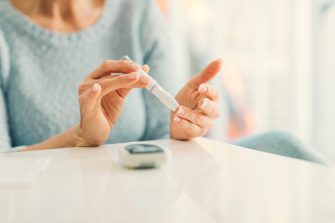Bionics, Biomechanics & Biomechatronics

The Bionics, Biomechanics & Biomechatronics research theme creates opportunities for researchers who are experts in bionics, biomechanics, neuromodulation and bioelectronics to translate innovative ideas into cutting-edge products that will improve human health, aid rehabilitation, and support a better quality of life. Having access to state-of-the-art capabilities in hardware design and fabrication means that our researchers can focus on developing medical technologies that are clinically fit-for-purpose, as well as commercially viable.
- Our team
- Additional team members
- Our capabilities and infrastructure
- Our impact
Also working in Bionics, Biomechanics and Biomechatronics:
Bionics, Biomechanics, & Biomechatronics encompasses computational modelling, medical device manufacturing, medical image processing, bioelectronic technologies, smart textiles, wearable assist devices, artificial robotic organs, and surgical robots. We specialise in simulating complex systems to understand the physiology of sensory, cardiovascular, and musculoskeletal systems and their interactions with medical devices. We pioneer healthcare solutions for unmet needs in rehabilitation, cardiovascular diseases, sensory, neurological, and inflammatory disorders, gastrointestinal surgery and other endoluminal interventions.
We excel in rapidly prototyping and developing cutting-edge medical technologies, supported by state-of-the-art fabrication and evaluation facilities for medical devices and soft robotics, along with access to UNSW Animal Services, Gait Laboratories at NeuRA, the UNSW Makerspace network, and the Australian National Fabrication Facility. Our capabilities include advanced tools like multichannel electrophysiology systems and new chip design, which contribute to research projects such as brain-machine interfaces and medical robots.
You can get more information on our Facilities here.
- Artificial muscles to keep 64 million hearts pumping
- On the right beat for artificial hearts
- The world's tiniest 3D printer delivers a good gut feeling
- The AutoGut project, better, more personallised management of IBD
- A vision to help 10 million people with Parkinson’s Disease walk
- The human movement in biomedical engineering
- Modelling nerves for neurological insights
- Neurostimulation offers new hope for chronic pain
- Optrodes: neurology’s leading lights













